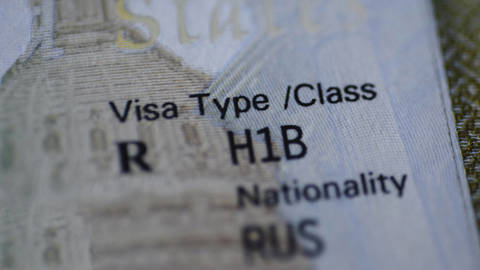-
Can Trump Dump the Dollar?

Can Trump Dump the Dollar?
Barry Eichengreen argues that while the incoming administration could certainly weaken the greenback, the US would not benefit. -
A No-Brainer for Global Growth and US Jobs

A No-Brainer for Global Growth and US Jobs
Joseph E. Stiglitz & Mark Weisbrot call for a new issuance of the International Monetary Fund’s international reserve asset. -
What Will Trump Do to the US Economy?

What Will Trump Do to the US Economy?
From cutting taxes to raising tariffs to eroding central-bank independence, US President-elect Donald Trump has made a wide range of economic promises, many of which threaten to blow up the deficit and fuel inflation. But powerful institutional, political, and economic constraints, together with Trump’s capriciousness, have spurred disagreement about how worried we should be.
-
Europe’s CEOs Must Speak Up on AI Regulation

Europe’s CEOs Must Speak Up on AI Regulation
Sylvain Duranton & Kirsten Rulf worry that the drafting of legal frameworks is being left to just a few players. -
An American Catastrophe

An American Catastrophe
Jan T. Gross wonders how long it will take the United States to rebuild what Donald Trump is about to destroy. -
The Truth About Migration

The Truth About Migration
Ian Goldin warns that stricter border controls often exacerbate the very problems they aim to solve. -
Is It the Hour of Europe Again?

Is It the Hour of Europe Again?
Daniel Gros urges European leaders to support Ukraine, politically and financially, if Donald Trump abandons it. -
Are High-Skill Immigrants a Problem?

Are High-Skill Immigrants a Problem?
Daron Acemoglu highlights some underappreciated risks of policies like the United States’ H-1B visa program. -
Fundamentalist Perverts

Fundamentalist Perverts
Slavoj Žižek regards most violent religious conservatism as merely an inauthentic expression of resentment.

It is ironic that social democratic Sweden has become a Thatcherite icon. They say that cuts in public spending were the main cause of Sweden’s economic recovery from the slump of 1992-3. Most experts think that the 30% devaluation of the krona was rather more important.
Secure your copy of PS Quarterly: The Year Ahead 2025
Our annual flagship magazine, PS Quarterly: The Year Ahead 2025, has arrived. To gain digital access to all of the magazine’s content, and receive your print copy, subscribe to PS Digital Plus now.
Subscribe Now
Now Fraser Nelson has written a piece in the Daily Telegraph which reprises one called ‘Sweden’s secret recipe’, he wrote for the Spectator last year. Britain, says Nelson, is in such bad shape because Chancellor George Osborne has not taken a leaf out of Sweden’s book. Instead of stimulating the economy after 2009, Sweden’s centre centre-right finance minister Anders Borg transformed Sweden into ‘a land of sun, snow and supply-side economics’
Osborne should certainly learn from Borg, but not the lesson Fraser wants him to dig out of the snow. True enough, Sweden is doing much better than Britain. Average GDP growth between 2008 and 2012 was 1.5% higher in Sweden than in Britain. While Britain is struggling with a deficit of around 8% of GDP Sweden is enjoying balanced budgets. While general government gross debt is 88% in Britain, the equivalent figure for Sweden is 37%. Unemployment is high in both countries but the Swedish rate of 7.5% is somewhat lower than the corresponding number for Britain. Clearly, they got something right that we did not.
Contrary to what Nelson claims, the Swedish government has applied a pragmatic mixture of both supply and demand-side measures. Both Sweden and Britain stimulated demand in 2008-9. But whereas Sweden continued its growth Britain slid back into recession. The simplest explanation of this is that while Borg maintained public expenditure levels around 50% of GDP, Osborne reduced total managed public expenditure from 46.5% in 2010/11 to 43.4% in 2012/13 in the name of austerity.
This divergence particularly showed up in investment. In Britain, public net investment fell from 2.6% of GDP in 2010/11 to -0.2% in 2012/13. In Sweden, public investment remained around 3%. This does not only prepare the Swedish economy for the future by strengthening its competitiveness and ability to attract business, it also stimulates the economy today by creating jobs and thereby boosting growth. In October 2012, even the Coalition Government’s own forecasting agency, the Office for Fiscal Responsibility (OBR), admitted that Osborne’s ‘fiscal consolidation may […] have done more to slow growth than we assumed’. And the government’s semi-dissident Business Secretary, Vince Cable has been calling for more public investment financed by borrowing.
The primary lesson for Osborne is not to throw out what little demand-side leverage he has left but rather to follow Borg’s example of maintaining a steady level of public investment. Had Nelson had a chance to attend Borg’s speech at the LSE on the 16th of January, Borg could have told him so himself. In the Q&A session he declared himself a “long-term Keynesian”.